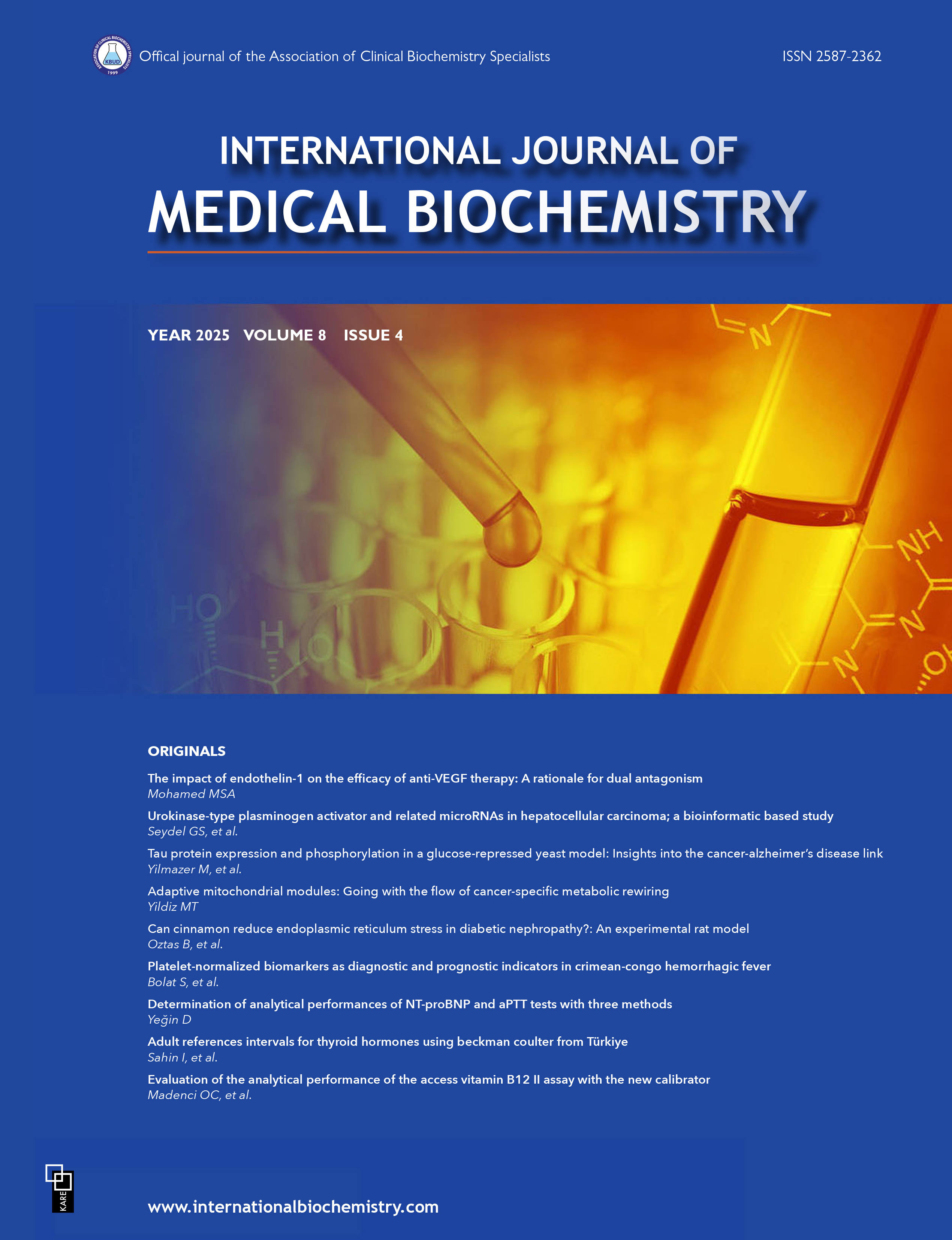Can immature granulocyte count and hemogram indices be good predictors of urinary tract infection in children?
Said İncir1, Mehmet Taşdemir2, Kerim Erhan Palaoglu3, Hatice Kant Calti1, Arzu Baygül4, Ilmay Bilge21Department of Clinical Laboratory, Koç University Hospital, Istanbul, Turkey2Division of Pediatric Nephrology, Department of Pediatrics, Koç University School of Medicine, Istanbul, Turkey
3Department of Clinical Laboratory, American Hospital, Istanbul, Turkey
4Department of Bioistatistics, Koc University Faculty of Medicine, Istanbul, Turkey
INTRODUCTION: A left shift in a complete blood count (CBC) indicates the presence of immature granulocytes (IGs), and an elevated count is associated with a bacterial infection. The aim of this study was to evaluate the role of the IG count and inflammatory CBC parameters and indices in children with a urinary tract infection (UTI).
METHODS: In this retrospective study, 55 children with a UTI (patient group) and 47 children with no infection matched for age and sex (control group) were enrolled. The symptoms, clinical findings, CBC parameters, and platelet-to-lymphocyte ratio (PLR), neutrophil-to-lymphocyte ratio (NLR), systemic immune-inflammatory index (SII), and urinalysis findings were recorded. The C-reactive protein (CRP) level, urine culture results, and radiological data for the UTI group were also noted and analyzed.
RESULTS: The IG count; leukocyte, platelet, and neutrophil counts; and the CRP value were higher in the patient group than in the control group (p=0.001, 0.001, 0.035, 0.001, and <0.001, respectively). The NLR, PLR, SII, and mean platelet volume were not significantly different between the groups. The median hemoglobin level was significantly lower in the patient group than in the control group (10.9 g/dL vs. 12.2 g/dL; p=0.004). The area under the curve values for CRP, and counts of IG, leukocytes, and neutrophils were 0.851 (95% confidence interval [CI]: 0.761-0.917), 0.736 (95% CI: 0.633-0.823), 0.714 (95% CI: 0.609-0.804), and 0.670 (95% CI: 0.564-0.765), respectively.
DISCUSSION AND CONCLUSION: The IG count is an easily obtained measurement that can be utilized alongside the CRP value and other indicators to create better predictive value in the management of UTI.
Manuscript Language: English







